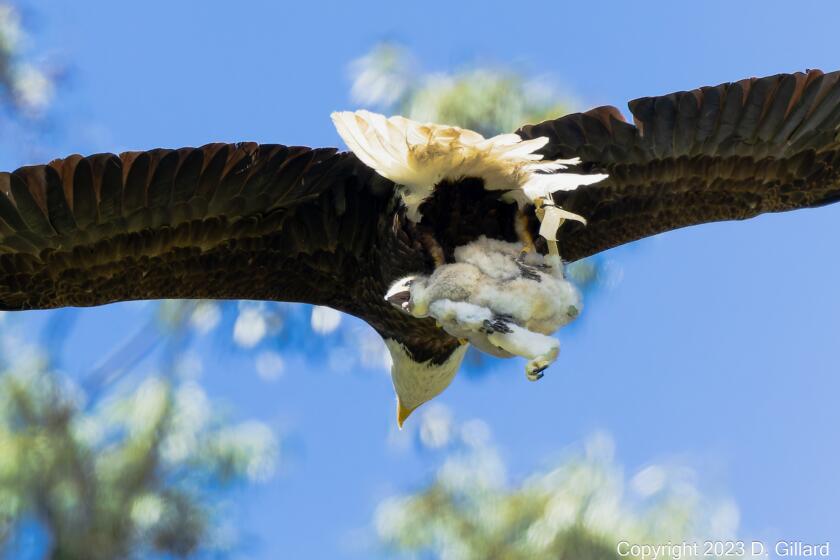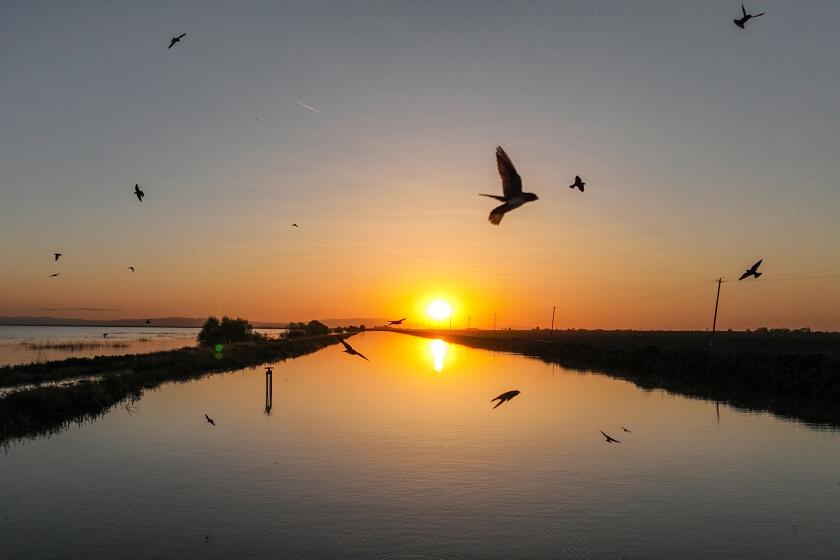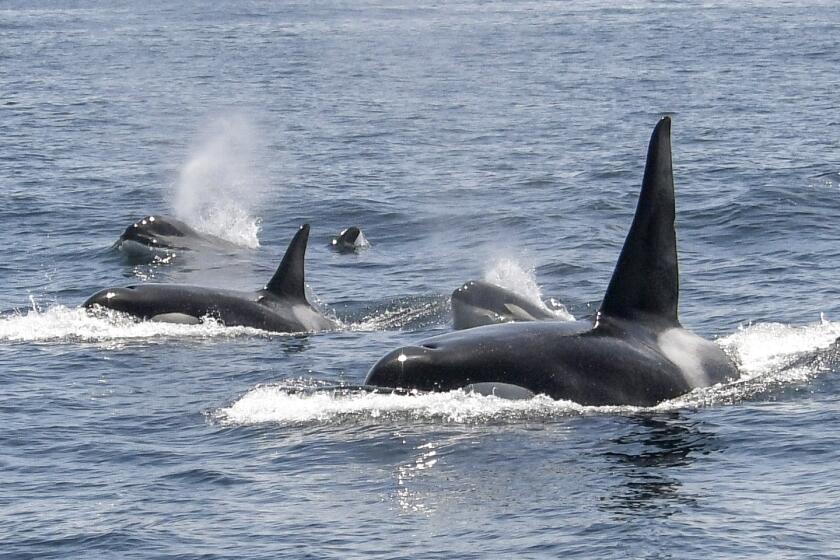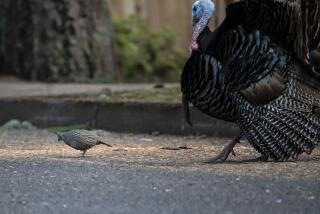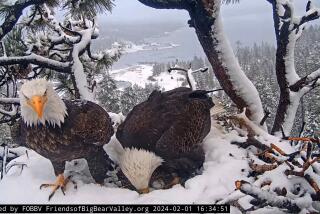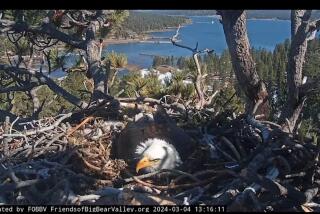Bay Area birdwatchers mourn the failed rescue of âTuffy,â the kidnapped baby hawk
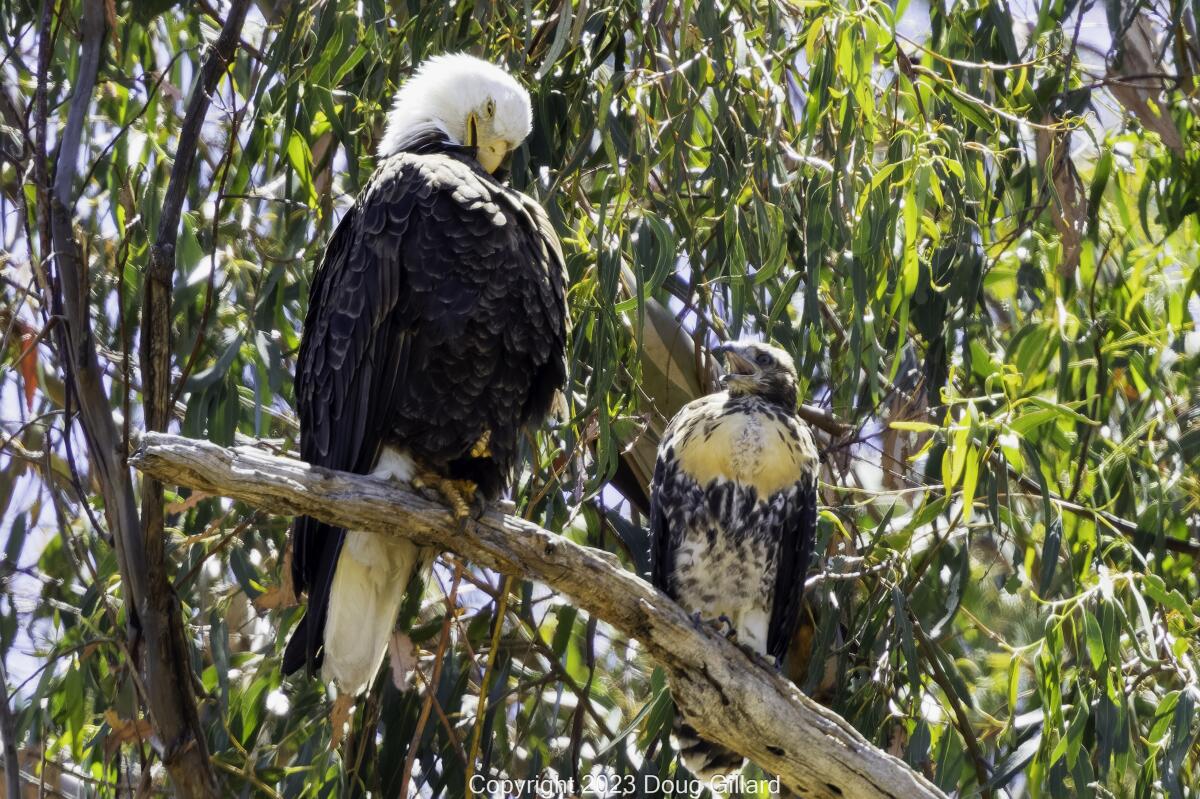
Tuffy, the immature red-tailed hawk who was âadoptedâ by a family of bald eagles and studied closely by a group of astonished Bay Area birders, has been found dead.
The fledgling raptorâs body was found on the ground Wednesday morning, following two days of increasing concern over the animalâs health.
The cause of death was not immediately known but was most likely starvation, said Doug Gillard, a professor of anatomy and physiology at Life Chiropractic College West in Hayward. Gillard and others found the body Wednesday morning and showed it to a raptor rehabilitator.
It was also discovered that Tuffy was female.
Tuffyâs short life was heavily documented by birders in Santa Clara County after Gillard, a former Olympian hammer-thrower, photographed the hawk chick in the talons of a female bald eagle and posted images to a popular birding Facebook page in Northern California.
It was assumed that the fuzzy hatchling was plucked from her nest on May 20 as a meal, but that parental instinct somehow trumped hunger when the eagle returned to its lair.
The brutal saga of a baby hawk that was kidnapped and raised by bald eagles has riveted Bay Area birdwatchers. No oneâs entirely sure whatâs going on.
Over the following days, Gillard and a growing number of birdwatchers and photographers documented the mother eagle feeding both the young hawk and its own eaglet.
Although red-tailed hawks and bald eagles typically regard each other as enemies, the eagles seemed to treat Tuffy like one of their own â feeding her and even rescuing her as one of her first few flight attempts failed miserably: The mother eagle caught her and managed to get her back into the nest.
But something in the last week triggered the mother eagle to go âpsychoâ and attack the young hawk, observers say.
On Friday, Gillard filmed the mother eagle swooping into the nest â talons forward and in attack mode â where the young hawk sat begging for food.
On the first go, Tuffy ducked just in time, and she missed. The same thing occurred on a second pass. On the third attempt, she snagged the hawk and flung her out of the nest. Tuffy, however, was able to grab hold of the side of the nest and haul herself back in. The mother then swooped in a fourth time, grabbed her and threw her out of the nest.
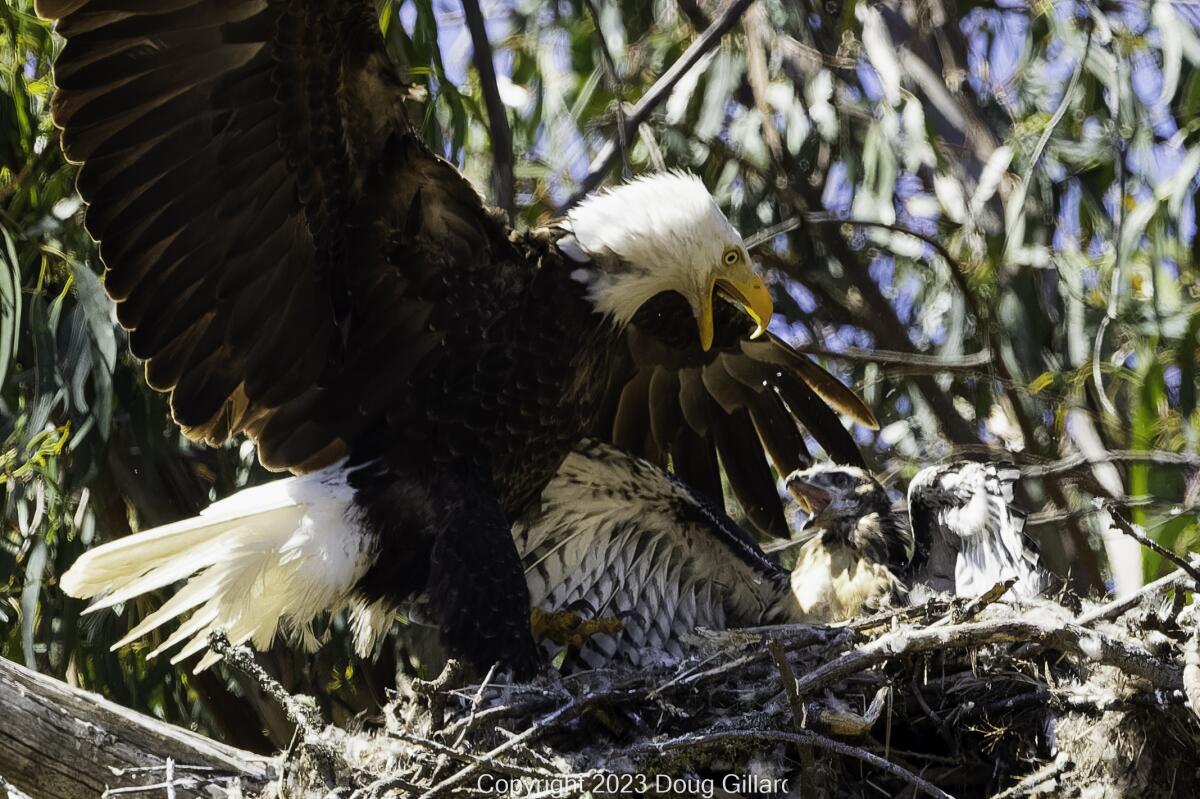
Tuffy eventually returned to the nest, according to Gillard, and things seemed to have calmed down a bit.
Early on Monday however, Gillard heard Tuffy cry out a few times from a nearby oak tree. Later that morning, a Times reporter and another photographer â Thy Bun from Oakland â spotted her in the shaded bosom of the oak looking listless and with eyes closed.
Soon after, the mother eagle returned to the nest with food for Lola, the eaglet â who hungrily grabbed the fully intact and wriggling squirrel her mom had captured for her. Gillard and Bun assumed Tuffy would join them.
She did not.
âI got my camera ready, hoping to catch her flying to the nest, in order to at least get some leftovers â I knew she must be starving, for she hadnât eaten, probably, since Saturday,â Gillard wrote on his Facebook page Tuesday. âTo my great surprise, she didnât fly to the nest! In fact, she didnât even make food cries. ... Something was very wrong.â
Concerned, Gillard got in his car, raced to an area where he could get cell reception and reached out to Craig Nikitas, a rehabilitator with Bay Area Raptor Rescue, whoâd gotten federal permission to perform a rescue.
Central Valley flooding has raised a new potential threat to migrating birds: Massive die-offs from bacteria-contaminated water.
By this time, a ranger from a nearby park had shown up, as had two additional photographers.
According to Gillard, Nikitas climbed the tree in order to net Tuffy, âwho was still completely limp â she made no effort to move away from all the commotion below.â
Unfortunately, the tree was old and the slippery moss and bark ripped off under his hands and feet, making the climb dangerous.
The ranger tried, but was also foiled by the tree.
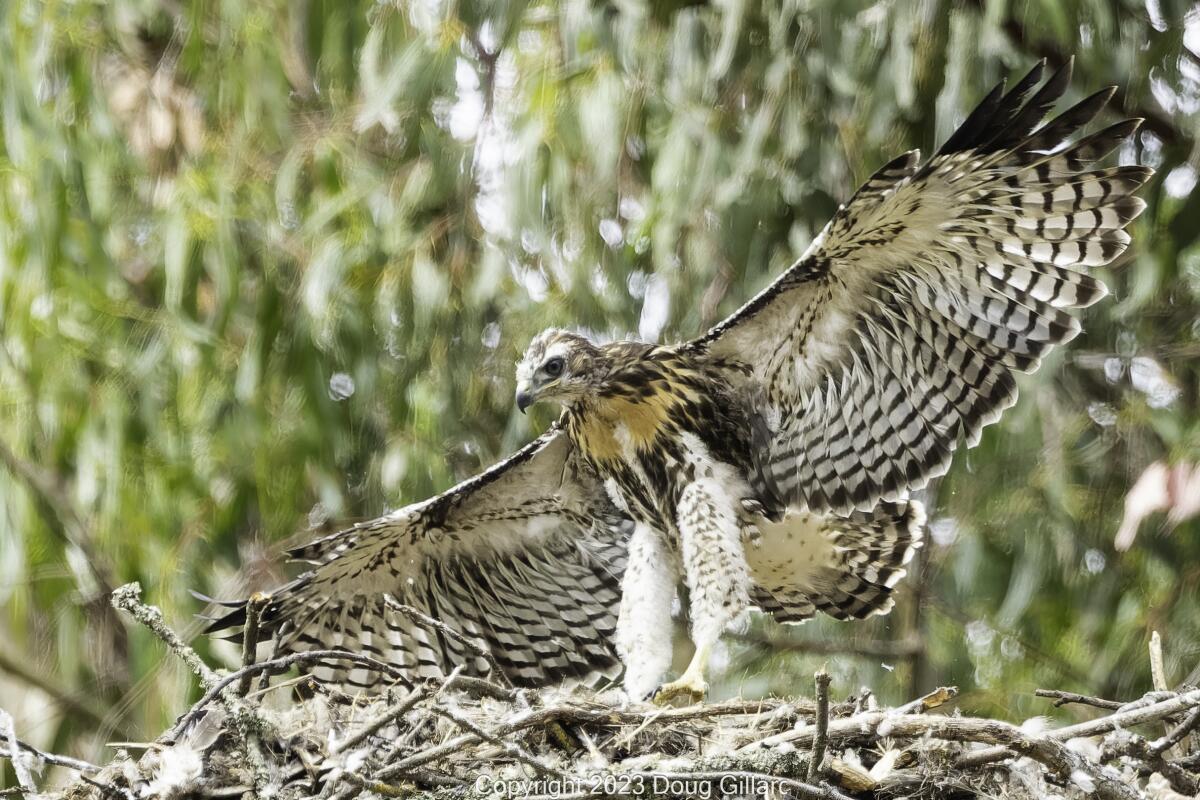
So Nikitas reached out to the feds to get permission to trap the hawk, which was granted. He then baited a trap with live mice in a nearby field that Tuffy could see from her perch and could have easily accessed with a short flight.
âThen we all waited and waited and waited in hopes Tuffy would come down,â wrote Gillard. âUnfortunately, after a long wait, Tuffy was declared, ânonresponsiveâ and the rescue attempt was over. Tuffy was not expected to survive the night.â
Gillard returned Tuesday and Tuffy was gone.
On Wednesday morning, he found her body. He gave the body to Nikitas, who will deliver it to the Wildlife Center of Silicon Valley, where they will freeze the body and hand it over to state scientists to examine, said Gillard.
Killer whales have reportedly attacked more than 500 boats in European waters recently. Are they exacting revenge for humanityâs treatment of orcas?
David Bird, McGill University emeritus professor and raptor biologist, said the likelihood Tuffy was going to survive was next to zero.
Interviewed Monday night, he suspected Tuffyâs recent flight performance â looking like a strong hawk â may have triggered the eagle mother to recognize her true identity. And that maybe the two hadnât bonded strongly enough to deter that awakening.
But he said once the mother began attacking her, it was unlikely sheâd make it.
âMore than half of young raptors donât make it through their first year of life,â he said. âThereâs so many things that could kill them: they could starve to death, they can get nailed by a predator, they could fly into a freight train, get caught up in wildfire, smoke, all kinds of things can happen.â
And if they donât have parental support â or get injured by a parent, as the case may have been with Tuffy â the odds go way, way down.
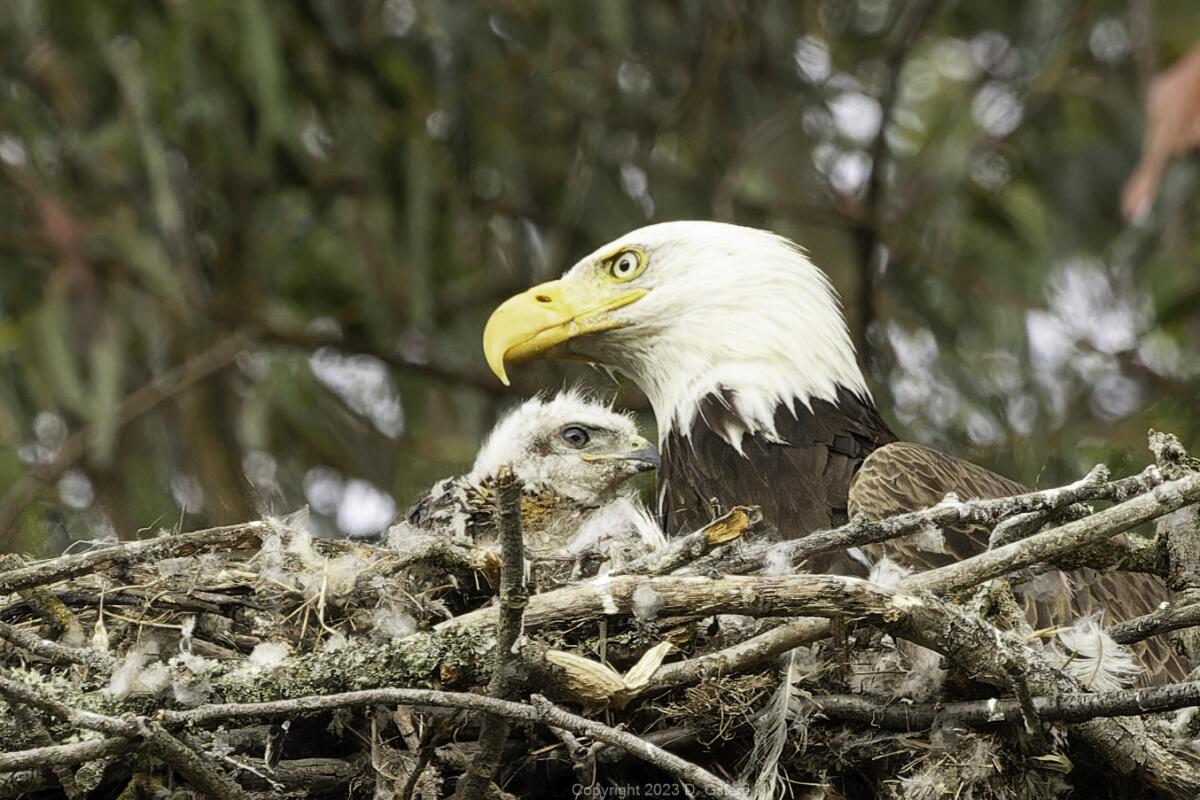
âI hate saying that because I know your readers, and people in California in particular, they love a good story,â he said. âBut as a biologist, you have to look at it rather pragmatically.â
As for Gillard, heâs devastated. He said it feels as if heâs lost a close friend. Heâs been following and rooting for Tuffy since mid-May â visiting the nest and chronicling her brief, extraordinary life.
On Wednesday afternoon, he said he was at an In-N-Out Burger with Tuffyâs body in a box in the back seat of his car.
âWhen Iâm sad, I comfort eat,â he said. Heâs also going to try to relax and take walks and look at birds.
Theyâve brought him comfort in the past, and heâs hopeful something new and avian will lift his spirits.
More to Read
Sign up for Essential California
The most important California stories and recommendations in your inbox every morning.
You may occasionally receive promotional content from the Los Angeles Times.
